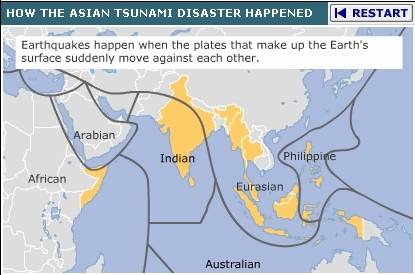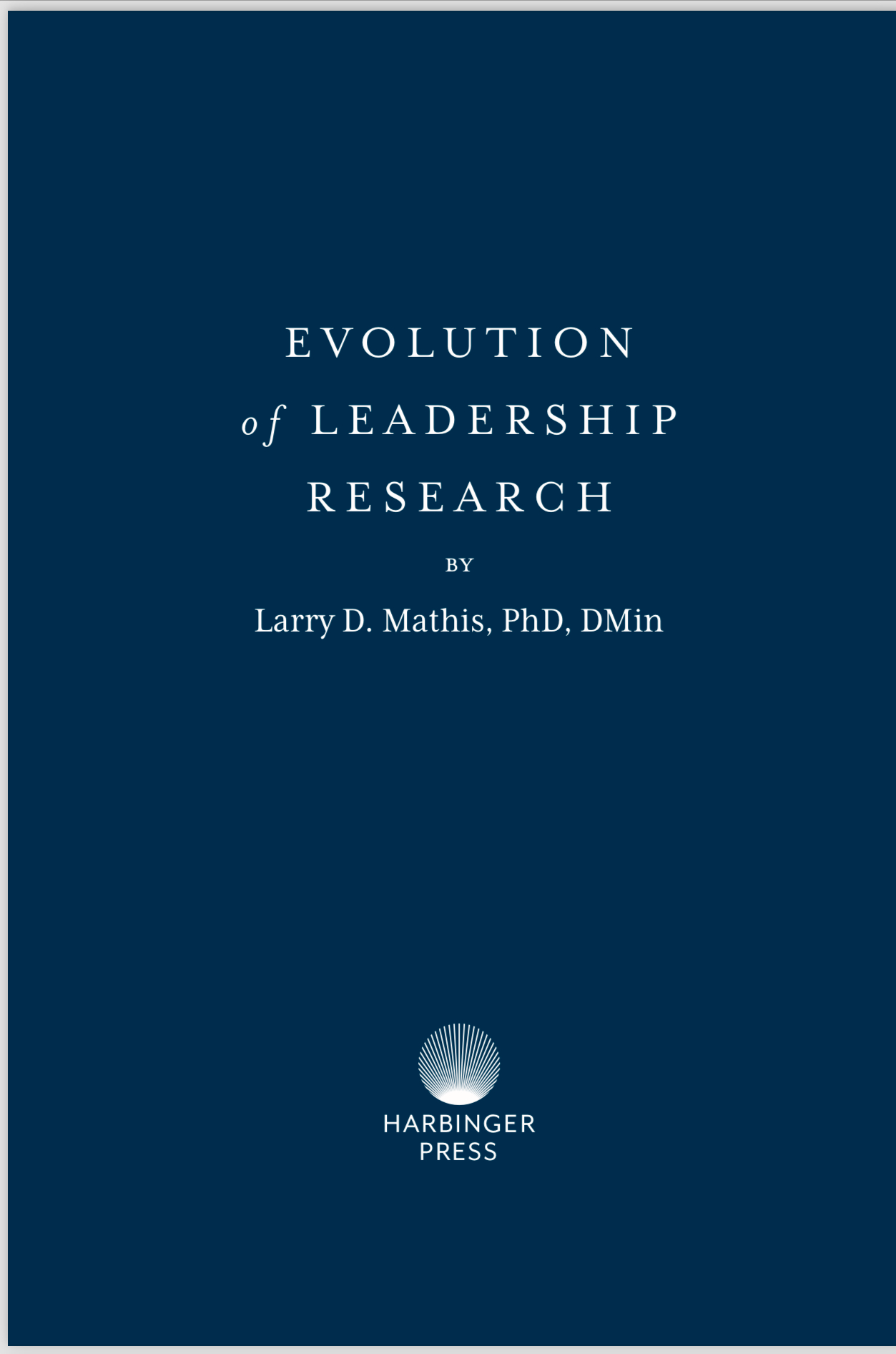
Introduction
On Boxing Day December 26, 2004, the world awoke to a horrific news: a tsunami had “boxed” out whole towns and villages in and around islands in the Indian Ocean/Pacific Ocean of South-East Asia (from Indonesia to India to Thailand), and extended its grievous reach to the Horn of Africa (Somalia). The death toll is still rising – and at last count as many as 150,000 human beings – not to talk of fauna and flora – are missing and/or presumed dead.
How could this devastation have occurred?
Well, let us look at some back-of-the-envelope arithmetics of the physics of the Tsunami.
Tsunami (Japanese for “harbor-wave”)
Some speeds to consider
In normal stride, an adult walks roughly at the speed of 5 kilometers per hour (km/h) or 3.1 miles per hour (mph). A person who runs 100 meters in 9 seconds runs at 40 km/h - or roughly 25 mph [1 mph = 1.60934 km/h; 1 km/h =0.621371 mph.]. Above 55 mph (or 88 km/h), you will get a speeding ticket driving in most highways in the US. Commercial jet airplanes typically fly at 540 mph (870 km/h) - roughly ten times the typical car speeding limit. The speed of sound at sea level is roughly 760 mph or 1,223 km/h [= Mach 1] and the speed of light is just about less than 1,000 times the speed of sound - 1,079,252.849 km/h to be exact.
The Tsunami and Channel Flow
Think of a long rectangular container filled with water, tilted such that water can flow out from one end. For a tsunami here, the water is ocean water; the bottom of the container is the ocean floor - and the sudden tilt of the container is caused by an earthquake. In the case in question, it was a megathrust earthquake of moment magnitude 9.0 on the Richter scale.
And that water flows onto coastal land and beyond (as far as 1 km or 0.6 miles inland) – into where human beings live.
The Speed of the Tsunami
So what was the speed of the Tsunami that hit parts of South-East Asia on December 26, 2004 ?
It depends on where in the ocean the quake which started the channel flow of water began, causing a shallow-water wave. Multiply the ocean depth (in meters) by roughly 10 (actually 9.8 meter per second squared), square root the product, multiply it by 3.6 – and you get roughly its speed in km/h [ see Table 1 below.]
We are told that the SE-Asia tsunami moved up at speeds up to 800 km/h – which means that it must have come from depths of about
5,000 m (5 km). [Average depth of the Pacific Ocean is about 4,188 m, and its deepest Mariana Trench is about 11,000 m.]
Of Tornadoes and Hurricanes
The speed of the water when it got to land is much slower – but you get the idea that it could be sufficiently fast to sweep objects in its path away. Even equally devastating is the HEIGHT of the water when it hits land, drowning life.
I have also given in Table 2 the equivalent wind speeds and categories for the more familiar depressions, storms, tornadoes and hurricanes. In August/September 2004, the mid-Atlantic/Southeast states (particularly the state of Florida) witnessed five major land-falling hurricanes: Hurricane Charley ( around August 13) was 145 mph [233 km/h; Level 4] and Gaston (at 75 mph, a Level 1 Hurricane in August; reclassified as a hurricane after the season), and the rest in September were Frances (around September 5; 105 mph; 169 km/h; Level 2), Ivan (around September 16; at 200 km/h, a Level 3 Hurricane) while Hurricane Jeanne was about 75 mph (120 km/h a Level 1 Hurricane; around September 26). Only Gaston missed Florida.
Noting that the density of sea water is about 1,030 kg / cubic meter while that of dry air is 1.2 kg per cubic meter at room temperature – and with kinetic energy directly proportional to mass and to the square of the moving medium’s speed - one can see that water of the same speed as air packs about 1000 times more energy ! [Doubling the speed (for example) quadruples the kinetic energy.]
Lord have mercy !
So Please Donate
Now that you have a rough idea of how devastating a tsunami is – and why it wrought what it did in South-East Asia and the Horn of Africa, please donate to your favorite charity. Don’t forget Somalia in the Horn of Africa, thank you.
May God rest the soul of those who died, and may God bless the lives of those who donate. [Amen.]
Mr. Wilson Iguade
[Nigeria/Naijapolitics Tsunami Donation Contact Person]
P.O Box 794601
Dallas, Texas 75379, USA
Cell: 469/569-3595
American Red Cross International Response Fund
P. O. Box 37243
Washington, DC 20013
800 HELP-NOW
http://www.redcross.org
See also: International Red Cross and Red Crescent Societies (www.ifrc.org)
Action Against Hunger
247 W. 37th St.
Suite 1201
New York, NY 10018
212 967 7800
Doctors Without Borders/Medecins Sans Frontiers
P. O. Box 1856
Merrifield
VA 22116-8056
888 392 0392
http://www.doctorswithout-borders.org
World Vision
P. O. Box 9716
Dept W
Federal War, WA 98063-9716
888 511 6592
http://www.worldvision.org
The U.S. Fund for UNICEF (800-FOR-KIDS),
Catholic Relief Services (800-736-3467)
Bibliography
http://news.bbc.co.uk/1/hi/world/asia-pacific/4136289.stm
Taken from “Animated Guide: The Tsunami disaster”
http://en.wikipedia.org/wiki/Density_of_air
Density of Air
http://hypertextbook.com/facts/2002/EdwardLaValley.shtml
Density of Sea Water
http://www.geophys.washington.edu/tsunami/general/physics/meaning.html
What Does “Tsunami” mean ?
http://www.news-journalonline.com/NewsJournalOnline/News/Neighbors/DailyJournal/03AreaDJ02123004.htm
Hurricanes top news story
Table 1: Relationship of Tsunami Water Speeds to Ocean Depth
Ocean
Depth
meters
Tsunami
Speeds
Km/h
Tsunami
Speeds
mph
Comment on Ocean Depth
10
36
22
100
114
71
150
139
86
200
161
100
Nigeria’s offshore resource derivation isobath
Off the Atlantic Coast
300
197
122
400
228
142
500
255
158
1,000
360
224
1,038
367
228
Average depth of Arctic Ocean
2,000
509
316
3,000
624
388
3,872
708
440
Average depth of Atlantic and Indian Oceans
4,000
720
447
average overall depth of oceans
4,188
737
458
Average depth of Pacific Ocean
5,000
805
500
5,450
840
522
Eurasia Basin – deepest in Arctic Ocean
7,000
952
591
7,725
1,000
621
Java Trench – deepest in Indian Ocean
8,000
1,018
632
8,648
1,059
658
Puerto Rico Trench – deepest in Atlantic Ocean
10,000
1,140
708
11,000
1,194
741
11,033
1,196
743
Mariana Trench – deepest in Pacific Ocean
12,000
1,247
774
Just above the speed of sound (~ 1200 km/h)
Source: http://mbgnet.mobot.org/salt/oceans/data.htm
Table 2: Classifying Depressions, Storms, Hurricanes and Tornadoes
Category
Damage
Wind
Speeds
mph
Wind
Speeds
Km/h
Tropical Depressions
23-39 mph
37-63 km/h
Tropical Storms
40-73 mph
64-117 km/h
Hurricanes (or Typhoons)*
Saffir/Simpson Scale
Category
Damage
Wind
Speeds
mph
Wind
Speeds
Km/h
Level 1
Minimal
74-95 mph
119-153 km/h
Level 2
Moderate
96-110 mph
154-177 km/h
Level 3
Extensive
111-130 mph
178-209 km/h
Level 4
Extreme
131-155 mph
210-250 km/h
Level 5
Catastrophic
>155 mph
>250 km/h
Tornadoes
Fujita Intensity Scale
Category
Damage
Wind
speeds
mph
Wind
speeds
Km/h
F0
Light
40–72 mph
64-116 km/h
F1
Moderate
73–112 mph
117-180 km/h
F2
Significant
113–157 mph
181-253 km/h
F3
Severe
158–206 mph
254-331 km/h
F4
Devastating
207–260 mph
333-418 km/h
F5
Incredible
261–318 mph
420-512 km/h
*The term hurricane is used for Northern Hemisphere tropical cyclones east of the International
Dateline to the Greenwich Meridian. The term typhoon is used for Pacific tropical cyclones north
of the Equator west of the International Dateline.
Sources:
http://hypertextbook.com/facts/StephanieStern.shtml
http://www.infoplease.com/ipa/A0193170.html
http://www.ucar.edu/educ_outreach/webweather/hurricane2.html
http://www.hawaii.navy.mil/hurricane/hurr_info.htm
http://www.aoml.noaa.gov/general/lib/laescae.html
http://www.nhc.noaa.gov/aboutgloss.shtml
RETURN

Review of “Evolution of Leadership Research by Larry D. Mathis, PhD, DMin “ The book was first brought to my attention by Shawn Mathis, Ph. D...

This article was first published on November 12, 2024, on https://constitutionaldiscourse.com/a-game-for-the-throne-the-nigerian-constitution-and-the-...

Civil Society and Social Movements: The Role of Activism and Radical Politics in Deepening Democracy in AfricaByOtive Igbuzor, PhDFounding Executive D...

Chimaroke Nnamani: Progenitor of Ebeano politics at 64By Paul MumehChimaroke-Nnamani2.jpg 88.87 KBHate or love him, Senator Chimaroke Nnamani; fo...

Background To The Recent Nigerian ElectionsGeneral Obasanjo more than just a "friend" of the AmericansElizabeth Liagin is an independent journalist wh...